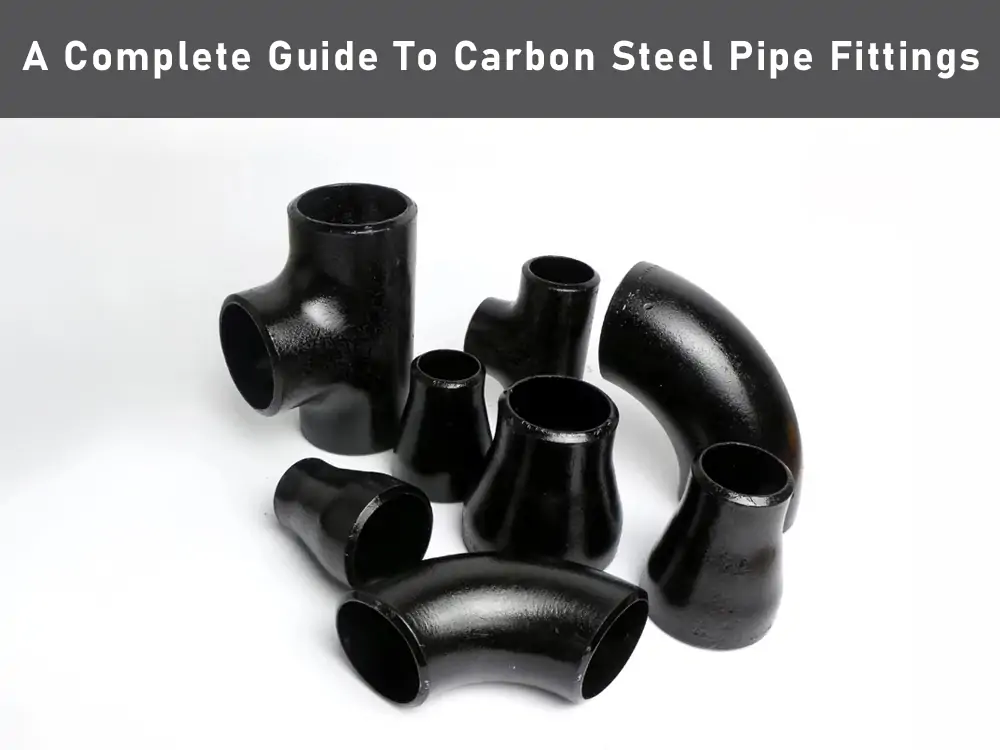
There are a lot of products and fittings available in the market. The choice of a specific fitting for the steel pipes is a very time-consuming task. Users conclude that the carbon steel fittings are reliable, offering a wide range of options that can resist high temperatures and pressures. In this article, you can learn about different kinds of carbon steel fittings, their manufacturing method, and the pros and cons of using these fittings.
What Are Carbon Steel Pipe Fittings?
For maintaining a continuous flow of fluid and gas, there is a need for joints that can attach the pipes. Carbon steel pipe fittings are the solution for connecting pipes in various shapes. These pipe fittings are of different shapes and structures that can be used according to need. These fittings are made from carbon steel alloy, an alloy of iron, and can withstand high temperatures and pressures.
Types of Carbon Steel Pipe Fittings
There are different carbon steel pipe fittings available in the market; some of them are explained as follows:
· Elbows
Most commonly used carbon steel fittings can be used to change the direction of the flow of the pipeline. It can bend the direction of the flow to 45° or 90°.
· Tees
The connection fitting that is “T” in shape is used for a three-way connection. This connection is used to split the flow to different connections and directions.
· Reducers
Sometimes there is a need to reduce the diameter of the pipeline; for that purpose, reducers are used to adjust the diameter of the pipe as needed, which can impact the pressure and fluid flow.
· Flanges
Flanges are shaped like a collar and are used to connect the pipe to other equipment, such as pumps and valves.
· Couplings and Nipples
Joining pipes of the same diameter is done by using the coupling method, while a small piece of pipe is used to connect two pipes, maintaining the distance, which is known as a nipple.
· Caps
As the name suggests, caps are used to restrict the flow of fluid and are attached to the end of the pipes.
· Crosses
A tee has three connections and a direction of fluid, while a cross has four ends for connections. It can be used to allow the flow of material in four different directions.
Manufacturing Standards and Specifications
The most common standards that are used to assess the quality of the carbon steel pipe fittings are as follows:
| Standards | Markets |
| ASME series | A series of standards used to assess the quality of carbon steel pipes and fittings in the American market is the ASM series. ASTM A234, ASME B16.9, and ASME B36M are the series names. |
| DIN series | The German market follows the DIN specification and standards for assessment. |
| EN series | The European market uses the EN series. |
| JIS series | The most commonly used standard in Japan is the JIS standard. |
| ISO series | ISO is the international standard for assessing the quality of carbon steel pipes. |
Advantages and Challenges
Like any other product, carbon steel pipe fittings have pros and cons for the users.
- Carbon increases the strength of the steel alloy, which makes the fittings suitable for high temperatures like -29°C (-20°F) to 400°C (752°F) and pressure 10,000 psi.
- These are the cost-effective solutions in comparison to other products.
- A vast variety of products is available in the market, which can be used for various purposes.
- The use of carbon steel fittings has reduced the need for labor, as these fittings are easy to install.
Considering the advantages, carbon steel pipes have certain drawbacks that are as follows:
- There is always a risk of corrosion associated with carbon and carbon alloy products.
- Proper maintenance is required for keeping the fitting intact.
- The carbon steel fittings weigh more than most of the other product fittings, such as the PVC.
The Appropriate Carbon Steel Pipe Fittings Selection
A product always needs evaluation of the environment and the conditions of use, whether it is on an industrial or domestic level. The considerations that should be taken into consideration include the following, so that you can make an informed decision:
- The pressure and temperature under which the pipe fitting will be working.
- The cost of the material and the budget of the company.
- Availability of the product is the key factor for selecting the carbon steel fittings.
- It should be assessed whether the material used in the manufacturing meets international standards.
Conclusion
These fitted carbon pipes are more dependable and flexible to apply in the joining procedure as well as the flow management of the piping system in various fields. Their resistance to high temperature, as well as strength, and the great variety of shapes and sizes, make them suitable for domestic and industrial uses. The type, standards, and requirements of fitting applications are essential to understand to select the adequate one. Due to the proper assessment of environmental and working conditions, with the use of carbon steel fittings, the expected long-term result can be reached, as well as performance and efficiency, which makes this solution an intelligent choice in the context of present-day pipeline systems.
